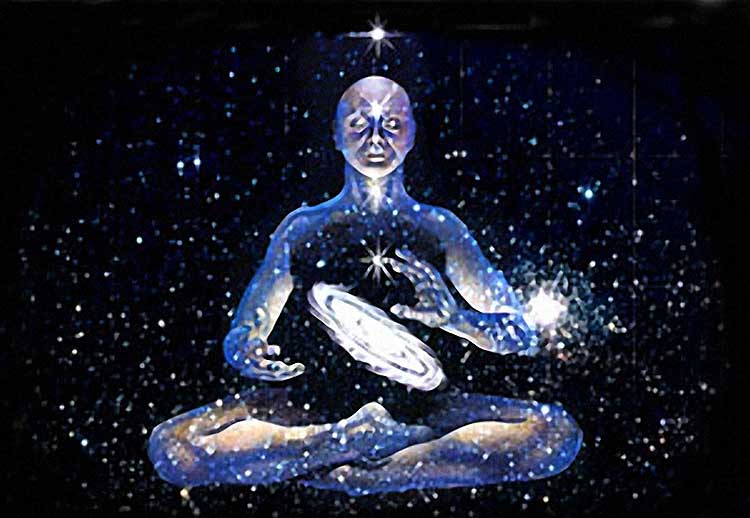Atman and Brahman

What distinguishes Atman (Self) from Brahman (Awareness)?
In the Vedanta equation: Awareness + Maya = Ishwara.
And on the other side: Atman + Ignorance = Jiva (individual soul).
RESPONSE:
Atman and Brahman are essentially the same limitless-conscious-existence.
When we speak of limitless-conscious-existence in its association with the body-mind-sense complex, we refer to it as sat-chit-ananda atman.
When we speak of it in terms of its absolute “un-seemingly-bound” nature, we refer to it as satyam-jnanam-anantam Brahman.
The meaning of the compounds sat-chit-ananda and satyam-jnanam-anantam is essentially the same.
Sat and satyam both refer to “being” or “existence.”
Chit and jnanam both refer to “consciousness” or “awareness.”
The literal meaning of jnanam is “knowledge,” but in reference to the nature of Brahman it indicates the knowledge-principle or intelligence-as-such that manifests as the “intelligent design” of the universe and lends sentiency to the mind.
There is a slight difference in the meaning of the terms ananda and anantam, but again both indicate essentially the same principle.
Ananda is often mistranslated and as “bliss” and consequently misunderstood to indicate that the nature of the self is experiential bliss, or the mundane happiness we associate with getting what we want, or simply being in a good mood.
The literal meaning of the word ananda is “bliss” and it does indicate experiential bliss in other contexts.
With regard to the self, ananda cannot refer to experiential bliss because the experience of bliss is known to the mind and, thus, is an object in Awareness. Hence, bliss cannot be the non-objectifiable witnessing awareness in the scope of which it appears.
Awareness is non-objectifiable because it is without defining or distinguishing boundaries itself. Therefore anything in reference to that Awareness, is an object appearing with its scope of being.
And though Awareness is often referred to as the Witness, it is more appropriately understood as the “illumining” factor that lends the mind sentiency and enables it to perform the functions we think of as knowing.
In other words, Awareness is not a personal entity equipped with a mind of its own, because the seen-object can never be the seer-subject (Awareness).
In Vedanta, ananda is a technical term that indicates “fullness.” It is an appropriate indicator of the nature of awareness because atma is that portion of all-pervasive awareness that “fills” the body-mind-sense complex.
Anta means “end” and placing the prefix a or an in from of a word in Sanskrit negates the meaning of the word. Thus, anantam literally means “without end.”
In terms of Brahman, it indicates the limitless nature of awareness. Awareness is limitless because everything (including abstract thoughts and emotions) is an object appearing within the scope of awareness, and therefore awareness itself must be limitless.
Thus, Brahman and atman are essentially the same limitless conscious existence, and in fact is often referred to as Brahman-atma.
Your equation of Brahman conditioned by its own inherent power of Maya with Isvara and atma conditioned by the same with jiva is basically correct.
It is important to note, however, that the mind-body-sense complex of the jiva is a form projected by Maya/Isvara, whereas avidya, the self-ignorance which afflicts the jiva, is a psychological condition that is the microcosmic consequence of Maya’s conditioning influence on Brahman.
While avidya can be eradicated through atma-jnanam, self-knowledge — Maya is an inherent aspect of Brahman and, thus, can never be fully eradicated.
This is why the body-mind-sense complex doesn’t suddenly dissolve upon the jiva’s realization of its true nature and, moreover, why jivas will endlessly arise and subside within the scope of Brahman’s being.





